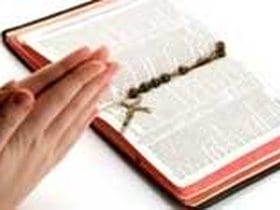
What is faith?
Faith is the realization of what is hoped or and evidence of things not seen. (Hebrews 11:1, NAB)
Faith is the assurance of things hoped for, the conviction of things not seen. (Hebrews 11:1, RSV)
This kind of faith was well demonstrated by Abraham:
- By faith, Abraham obeyed God when he was called to go to a foreign place which he was to receive as an inheritance.
- By faith, he received the power to regenerate even though he and his wife Sarah were past the age of childbearing.
- By faith, Abraham was willing to sacrifice his only son Isaac when put to the test.
What is faith?
- Faith is a miracle of grace, a gift from God. Faith is not a matter of human minds climbing up toward the divine, but of welcoming the revelation which God has given of himself.
- Faith means accepting God’s word and promises as true and trustworthy, and making a commitment to live accordingly.
- Faith can be either accepted or refused. Just as faith can be born and increase, it can also decrease and die.
Defective faith is faith without charity. Such faith fails to unite a person with Christ. Without Christ, the joy and ease to assent to the truth diminish, and a person is led to sin. The sinner who chooses to live in opposition to the precepts of Christ, the Gospel and the Church, will tend to repudiate the faith that condemns his behavior and manner of life.
There are two kinds of loss of faith:
- Heresy – the rejection of one or more truths of faith by a baptized person who still professes to be a Christian.
- Apostasy – the total repudiation of the Christian faith.
A Pew Research Center survey conducted in February, 2019 finds that most self-described Catholics in the U.S. don’t believe in Transubstantiation. Nearly seven-in-ten Catholics (69%) say that the bread and wine used in Communion “are symbols of the body and blood of Jesus Christ.” Only one-third say that they believe that the bread and wine actually become the Body and Blood of Jesus during Mass.
In addition, the survey also asked whether Catholics know if the church teaches Transubstantiation. Most respondents who said that they believe that the bread and wine are merely symbols do not know that the church teaches Transubstantiation.
Institution of the Eucharist: Matthew 26:26-30, Mark 14:22-25, Luke 22:14-23
I am the Bread of Life: John 6:48-59
About six-in-ten (63%) of Catholics who attend Mass at least once a week accept the church’s teaching about transubstantiation. But even among those who attend Mass at least once a week, about one-third (37%) don’t believe that the bread and wine actually become the Body and Blood of Christ. Among those who do not attend Mass weekly, large majorities say they believe the bread and wine are symbolic and do not actually become the Body and Blood of Jesus.
2 things Catholics today probably don’t know:
- There is a longer form of the sign of the Cross: By the sign of the cross deliver us from our enemies, you who are our God. In the name of the Father, and of the Son, and of the Holy Spirit. Amen.
- Some have been told that they are not to look at the host or chalice as it is being raised but to bow down their heads. The priest raises the Host in order to show Jesus now present to the people. Therefore, you ought to look at the sacred Body of Jesus. Similarly, the priest holds up the Chalice in order to show the people. Therefore, you ought to look at the Chalice when it is raised during the Consecration.